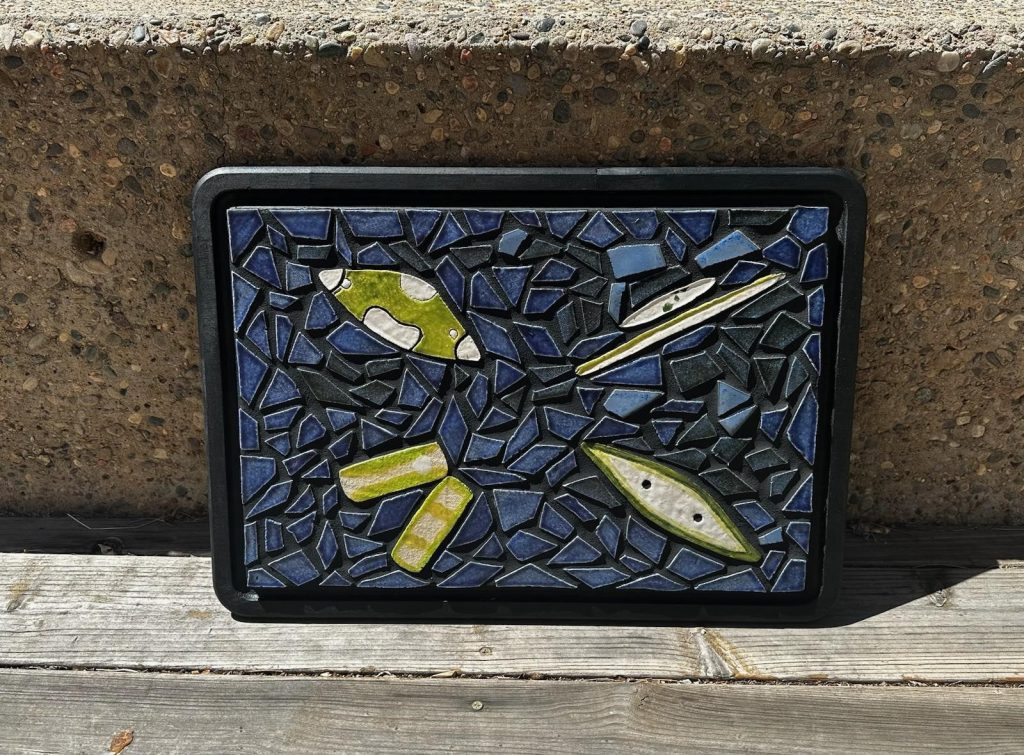By Sara Atencio-Gonzales, Communication & Journalism Major, Mentor: Prof Becky Bixby.

Diatoms are a type of algae that are found in almost every aquatic environment including lakes, streams, and ponds. They are the food resource for many animals and make their own energy through photosynthesis. Nearly all diatoms are microscopic as they are the size of half a millimeter or smaller. It takes a high-powered microscope for researchers to be able to see them.
For this science communication project, we worked on making the microscopic world more accessible so people who don’t have the tools to be able to look at diatoms can get a sense of what they are and why they are so important to our environment. For this project, we collected some samples from Tingley Beach at the ABQ Biopark. We looked at the samples under a compound microscope to be able to look at the diatoms.
For this project, I made a mosaic that highlights four types of diatoms. The four types of diatoms we focused on were Ulnaria, Encyonema, Diatoma and Craticula. Like said before, diatoms are important photosynthesizes and they produce 25% of the air we breathe. They are helpful to use as monitoring tools to test the health of water bodies. Diatoms react fast to changes in water chemistry, so researchers use them to understand if a water body is healthy or not. They are extremely important to the environment, but you would never really know because they are so small you need such a powerful microscope just to see them.
We wanted to make something that cannot be seen with the naked eye feel like something that anyone can learn about through this communication project.
